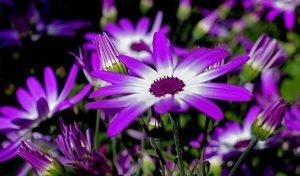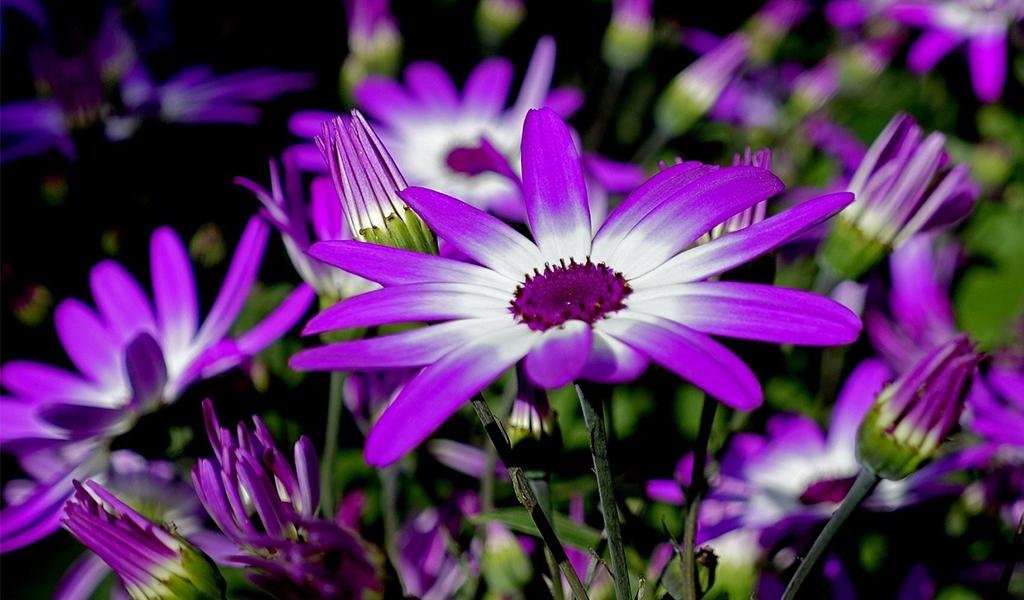The Pericallis Plant is a small genus of 15 species of flowering plants in the Asteraceae family native to the Canary Islands, Madeira and the Azores.
The genus includes herbaceous plants and small subshrubs.
In the past this genus was often classified as Cineraria or Senecio. Commonly known as florists’ Cineraria, Pericallis have magnificent blooms. Which are each 1 to 2 inches wide arranged in a compact, flattened or slightly domed head. which almost completely hides the leaves.
Flower petals can be blue, maroon, pink, purple, red, or white; they surround a dark center which can be any of these colors.
Pericallis Plant
Pericallis, also known as cineraria, are round and 8 to 12 inches tall. Early spring and late winter are when Pericallis flowers. In flower shops and garden centers, they are frequently offered for sale in full bloom. While it’s still chilly outdoors, the majority are cultivated in greenhouses and offer color indoors.
Pericallis do well in colder climates and pair well with other early bloomers like pansies and sweet alyssums. The plant also serves as a deer repellent and is appealing to butterflies. They often don’t last long. It is regarded as a passing house plant.
The flowering season can be prolonged by several weeks if maintained cold and wet. Flowers have a lengthy shelf life. The plant loses its appeal as the blossom withers. Extremely thick foliage covers the bush.
Pericallis Plant Overview
- Botanical Name: Pericallis x hybrida
- Common Name: Cineraria, Florist’s Cineraria or common ragwort
- Family: Asteraceae
- Plant Type: Herbaceous Perennial
- Mature Size: 2-5 Ft.
- Sun Exposure: Partial to full shade
- Soil Type: Moist but well-draining
- Soil pH: Acidic (5.5–6.0 pH)
- Bloom Time: Seasonal bloomer; Flowers between 16 and 18 weeks after seed germination.
- Flower Color: Various (No Yellow)
- Hardiness Zones: 9-11 (USDA)
- Native Area: Nursery hybrid; Azores and Canary Islands native species
Pericallis Plant Species

The genus Pericallis contains about 15 species, native to Madeira and the Canary Islands.
P. cruenta: It often grows in Tenerife’s laurel forests and has a non-woody growth type. They come in a variety of hues, including as pink, red, lavender, purple, and blue. The eyes of many flowers are white.
P. steetzii: The Pericallis steetzii species is unique to the island of La Gomera. It varies from the other species because it is a perennial herb with multiple bracts on its blooms. Ligules can be white, pink, or red, depending on the environment. On the underside, the leaves are greenish-white, and the basal leaves have auricles.
P. Webbii: Pericallis Webbii has huge, heart-shaped, dark moss-green leaves that are 3–4′ tall and broad.
P. lanata: The leaves of Pericallis lanata are smooth and grey-green. Produces solitary, multi-starred, pale purple flowers from May to August.
How To Grow Pericallis Plant
The Pericallis is a cut flower that is widely used in the commercial sector and is often grown from seed. In small pots or flat trays filled with a commercial seed-starter mix, scatter the seeds. Gently press the seeds into the soil. Then don’t cover the seeds with dirt because they need light to grow.
Maintain moisture in the seedlings; germination typically takes 14 to 21 days. The seedlings can be moved into separate pots as soon as they sprout genuine leaves to continue developing. 16 to 18 weeks after seed germination, plants begin to blossom.
When cultivated as a perennial in the garden, this plant will quickly reproduce and spread. Deadhead the blossoms before the seeds develop if you wish to stop this.
Pruning
Pruning is necessary for Pericallis hybrid to encourage growth. It only needs to remove its decaying blossoms. Deadheading spent flowers in pruning will keep the plant clean. Will extend the blooming season by encouraging the plant to produce new flower buds.
The plants are often removed once the blooms have dried and stored for the next season. This is due to the decreased likelihood of the same plant flowering again. The leaves, on the other hand, are always green.
Propagation
Pericallis are usually propagated from seed, but stem cuttings made in the fall allow you to grow new plants for indoor use during the winter months. Cut off the top four to six inches of stems that are ideally non-flowering.
The cut end should be placed in a tiny container with ordinary potting soil after being soaked with rooting hormone. When you water the soil and set the plant inside a large plastic bag, the leaves should not come into contact with it.
Cuttings should be done in a cool, well-lit area. Check the cutting periodically to see whether roots have formed. Once the cutting has rooted, remove it from the plastic bag and continue to grow it in a bright, slightly cooler location.
Also Read: Top 11 Ginger Plant Varieties For Growing In Your Garden
Pericallis Plant Care
Pericallis stunning hues make it an aptly chosen plant. It has gained popularity as a cold-weather decorative annual in recent years in the United States. This plant requires little maintenance.
They are grown outdoors or in containers. It needs moist, well-drained soil. Blooms well in full shade. Frequent watering is necessary to keep the soil constantly moist. There are more criteria for temperature. Pest and fertilizer issues should be addressed.
Soil And Fertilizer
Pericallis prefers a rich, wet, somewhat acidic, well-draining soil. Peat moss and coffee grinds are two amendments that might help improve the soil for this fairly finicky plant.
Standard potting soil performs well when grown inside since it has a high peat content, which ensures an acidic soil pH. The ground must have a pH that is just barely acidic.
When flower buds begin to develop, fertilize the Pericallis plant with a half-strength balanced fertilizer every two weeks. They are constantly hungry, these plants do not like to be overfed with fertilizer.
Light And Water
Pericallis need constant moisture, but they also need air to breathe. Water generously and regularly, at the base of the plant. In hot temperatures, constant irrigation is necessary. Overwatering and excess moisture retention can lead to fungal infections and plant death.
Pericallis thrives in situations with filtered sunlight or light shade. This makes it suitable for growing as an indoor plant as well. The plant does not perform well in direct sunlight.
Temperature and Humidity
Pericallis thrive best in humid climates. Don’t overwet the soil; doing so can lead to root rot. Humidity needs to be considered more when growing indoors. Temperatures between 50 and 65 degrees Fahrenheit are ideal for plant growth. If it is below 35 degrees at night, the plants will die, and if the temperature rises above 80 degrees, they will stop blooming.
Excessive heat or cold can stunt plant growth. When the seeds germinate, more precautions are required. Plants need cooler temperatures when they are indoors.
Pests and Diseases
Many different plant diseases and pests can affect Pericles. When compared to garden plants, indoor plants are often more sensitive. Powdery mildew, gray mold, crown or root rot fungi, and some plant viruses are examples of diseases that can be problematic.
The red spider mite infestation can be identified by the fine webbing on the plant. Insecticides or biologically parasitic mites can be used to control these sap-sucking insects.

